The Pros and Cons of Leather Boot Soles
Ah, the old leather sole conundrum.
“Wow, those are beautiful shoes/boots. Look at the profile! What class. Oh, leather soles, never mind”.
That used to be my thinking every time I see a lovely pair of boots or shoes, only to discover that a leather sole is lurking underneath, ready to wear out — or worse, cause me to fall on my butt. It’s a common dilemma: form over function. In my mind, leather soles are classy, but they can also be impractical. If I never had to walk outdoors in my shoes, then great, I’d wear leather soles more frequently. But the problem is that I do wear my shoes outdoors.
Still, I think I’ve been too harsh. There are times when leather soles can be a perfect choice, and they have more “pros” than you might have thought. In the spirit of open-mindedness, I’m going to check my assumptions at the door and take an unbiased look at leather soles.
The Pros of Leather Soles
Leather soles have to compete with rubber and other soles on aesthetics, utility, comfort, and durability. So how do they stack up?
It’s the Dressiest Sole
We’re talking in generalities here, obviously, but a leather outsole has a low profile, which is well suited to a dressy outfit. If I’m ever wearing a suit, I prefer leather soles because they’re both old fashioned and refined, just like a good suit should be.
If you’re only planning on wearing them inside, then you also get the added benefit of a nice click-clack sound on the floor.
They’re Very Soft and Comfortable
Leather soles are soft. Many guys will only wear shoes with leather uppers and leather outsoles for this reason — relative to a lot of tough rubber outsoles, they’re much friendlier on the knees and with regard to shock absorption. They mold around the shape of the foot over time, helping to provide a feeling of support, plus they’re very flexible and have a good ground feel.
They Break In Quickly
Out-of-the-box comfort and durability are often at odds. A pair of shoes made with EVA and rubber are pretty comfy from the get go, but a pair of steel shanked hiking boots, not so much. The reason is that materials associated with comfort are lighter and lack rigidity, while more durable materials, like steel, wood, and cork, are all denser and stronger.
The benefit of a pliable material like leather is that it breaks in fast. It also starts molding to your foot right away. Even cork takes a bit of time to heat up and mold to the shape of your foot.
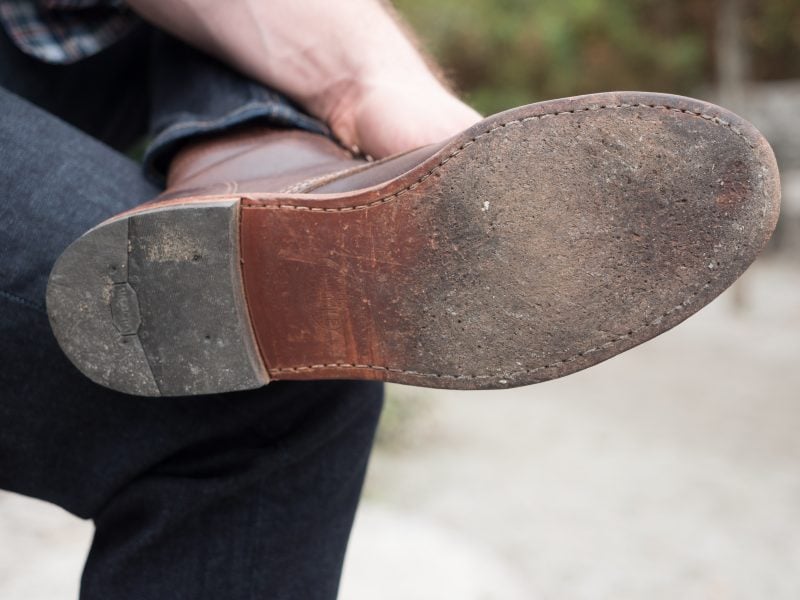
Odor Resistant
The more natural materials in a shoe, the less likely it is to smell bad. Seriously: mostly leather shoes and boots will prevent bacterial growth. The same is true for cork, and this is why a lot of guys are happy to go sockless in leather lined, leather soled shoes. (We wouldn’t, but you do you.)
Breathable
This is a big one for guys down south. The reason so many cowboy boots have leather soles is, well, all of the above, but also because leather breathes better in heat than synthetics. This is also why a lot of guys prefer unlined boots, despite how much smoother feeling the interior of leather lined boots are: boots made of leather, and not too much of it, keep your feet more comfortable when it’s warm out.
It might not be ideal if you live in colder climates, though; rubber is a great insulator, for better or worse.
[Related: 6 Kinds of Boot Soles You Should Know About]
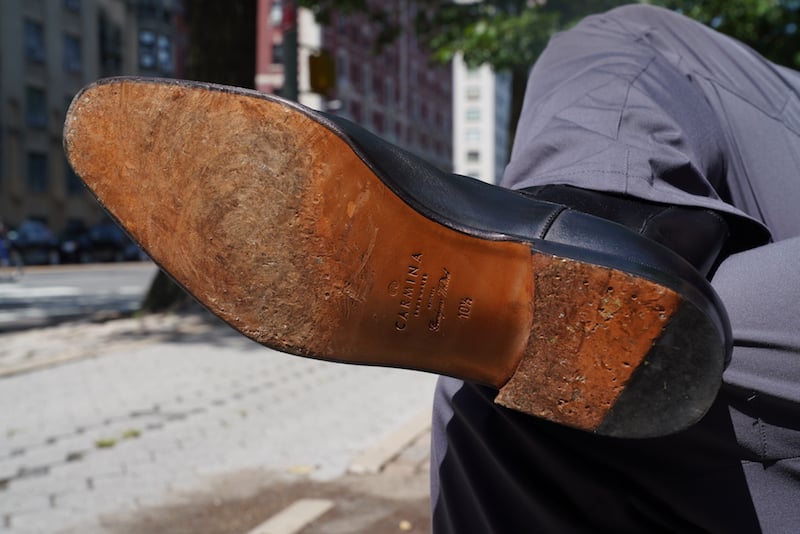
Dancing
I’m the last guy I’d refer to as a dancer, but in some leather soled Alden wingtips at a recent wedding I had an epiphany: leather soles are great for dancing. Flat, clacky, and easy to swish around the floor while making contact with it, I was far lighter on my feet in leather soles. Thanks to several commenters, including the aptly named Dancing Cowgirl, for pointing this out!
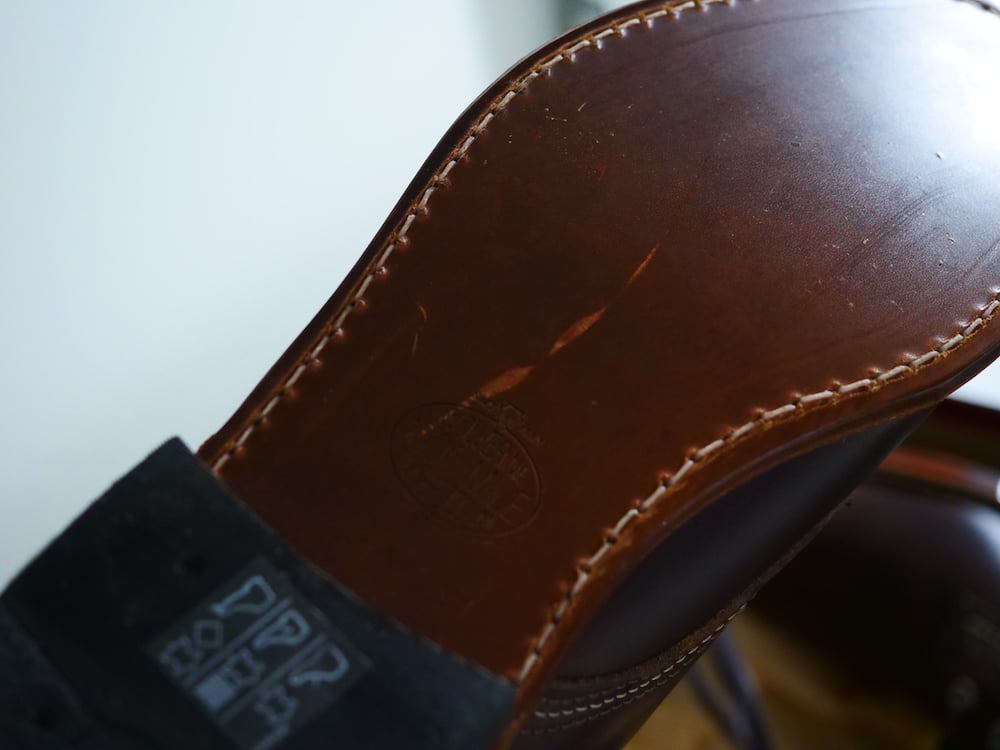
Leather Sole Cons
With all those pros, why would someone avoid leather soles? While the pros are many and the cons are few, the disadvantages are notable, as they affect the functionality of the shoe.
They’re Not Durable
A shoe’s outsole provides grip, stability, and protection from the elements. Rubber is really good at this. Leather, not so much. When you first get a leather sole it’s smooth as silk, like in the picture above. Wear it outside for ten minutes, and it’ll already look a lot like the other pictures in this article.
The smoothness is a big part of why leather soles are considered dressy and classic. But they only look like that on the first wear.
I should point out that some manufacturers try to counteract this. A good example is oak soles: these are not made of wood, but rather, a type of vegetable-tanned leather treated with a dye derived from oak bark, which makes the leather hardier. One of the most famous producers of this type of sole is J.R. Rendenback Soles, who provide leather outsoles for Allen Edmonds. However, they are not 100% leather, as Rendenback will often add rubber studs to their outsoles for grip.
Oak soles are popular in higher end dress shoes, mainly because vegetable-tanned leather is more expensive than the more common chrome tanned leather.
But in general, leather outsoles get beat up and wear through more quickly than rubber.
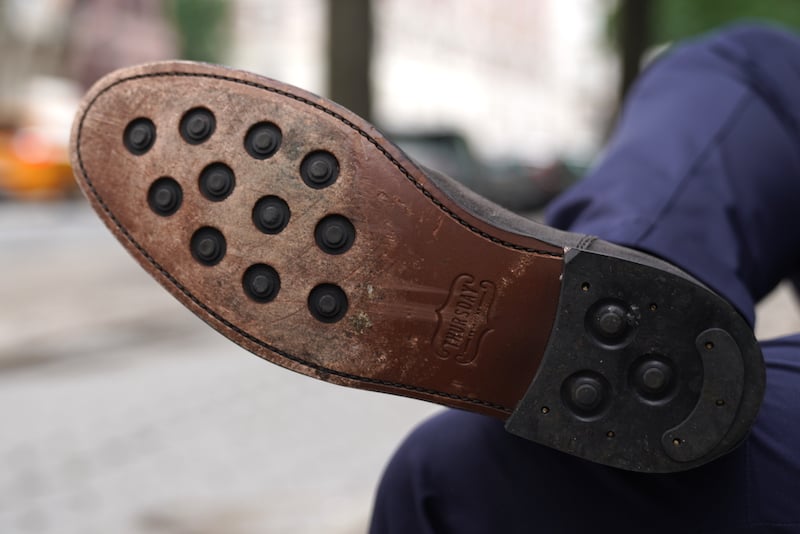
They’re Slippery
If you’re talking about regular leather soles (and not the kind you see above with studs in it), you’ll notice leather outsoles lack grip. If you live in a rainy or snowy climate, they are not nice to wear outside. The rubber outsole was invented primarily to make up for these shortcomings. Leather outsoles are, in many ways, an outdated technology: sole 1.0.
That said, and this is important, as the sole gets beat up and scratched, those markings improve the grip to a significant degree.
To avoid this, companies have found ways to combine leather and rubber.
You can see Thursday’s Cavalier boot above with the studded rubber outsole. Imagine combing a Dainite studded outsole with a leather sole, and presto change-o, you have a combo rubber studded outsole.
Other companies take other tactics, like the Zind boots from Helm. These use something called Fineline, a sole with a combination of rubber and leather that looks like this:
They’re Not That Water Resistant
One thing about rubber soles that is often overlooked is that they are a waterproof barrier between your foot and the wet ground. Unless you’ve walked in the rain with a pair of leather-soled shoes, you’ve probably never noticed how much you rely on rubber to shield your delicate feet from the elements.
This why a lot of leather-soled shoes are Butyl-Treated. Butyl is a chemical used in making rubber, so it’s sort of like taking some of the properties of a rubber sole and adding them to leather. Some people claim that butyl treatment adds stickiness to the shoe and improves grip, but how effective this is debatable. It does add water resistance and increases the durability of the shoe.
But generally, leather soles suck up water and and aren’t great for wet weather.
[Related: Why Is Dainite Such a Popular Boot Sole?]
They Lack Cushioning
In heritage boots, you often find cork in the midsole, and sometimes — as is the case with Thursday Boot Company, you’ll even find some EVA foam. These have the dual benefits of providing cushioning and allow for a comfortable fit.
Leather is nice and soft and offers some cushioning, but the sole isn’t thick and it’s not synthetic. So while it’s comfortable, it doesn’t have the superior shock absorption of something like a crepe rubber sole that you’ll find on Red Wing moc toes. If you’re standing for long periods or doing high impact work, then this will be noticeable. If you’re spending the day walking around a city, though, many find the softness of leather soles advantageous.
[Related: Everything you need to know about crepe soles]
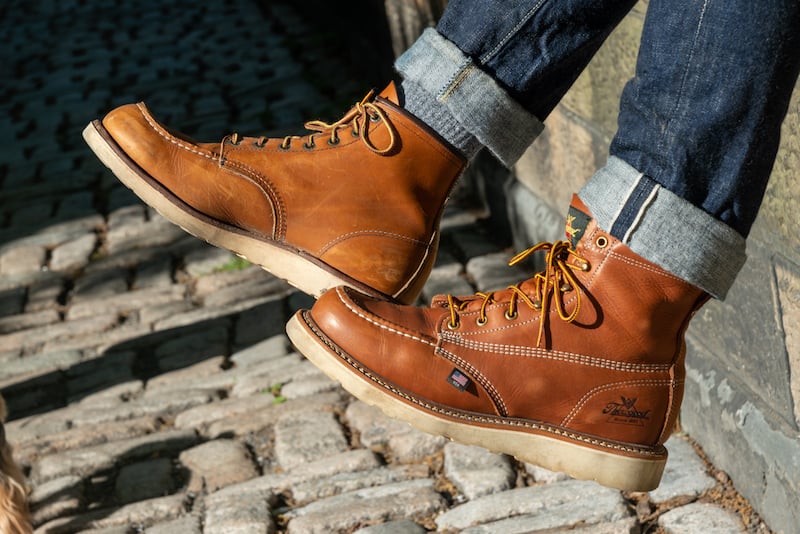
They’re Less Stable
Another often overlooked benefit of rubber and other ridged materials is the added stability. Hiking and work boots are engineered in a way that provides a wide base, which increases stability as you move over uneven surfaces.
Leather can’t be shaped in this manner, so you end up with a narrower look. This is great for formal settings when you’re trying to pull off a refined look, but not so much if you’re trying to move quickly over any type of obstacle.
The Takeaway
There are a ton of different types of outsoles you can pick for your boots, but leather is the OG, the only sole that’s stood the test of time for thousands of years.
It’s great if you want a sole that’s soft, that molds to the shape of your foot over time, that goes well with a suit, or will be resistant to odor. It’s not ideal for hiking or wet weather, nor is it ideal if you want to minimize resoles. It’s entirely up to you and what you prefer from your footwear; many guys are leather-or-nothing, others won’t go anywhere near it.
Personally, I love to have the option of leather soles — ultimately, the best option is having more than one pair of boots!
[Related: My list of The Best Boots for Men]


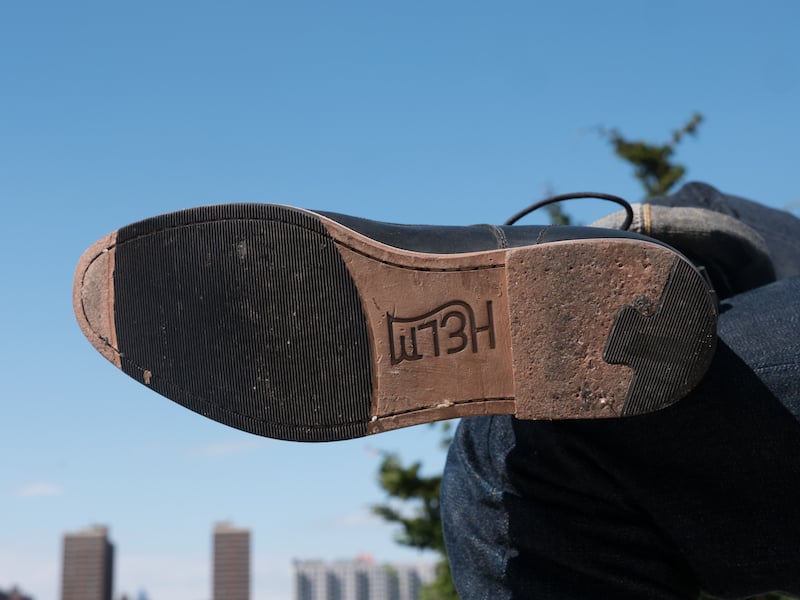
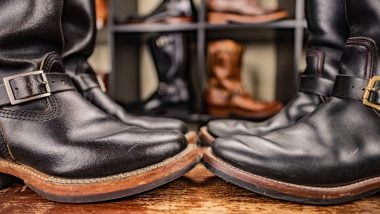
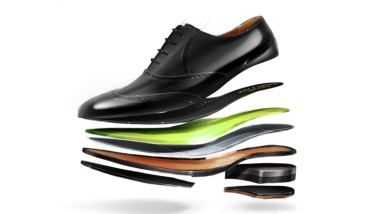
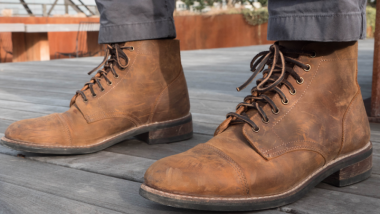
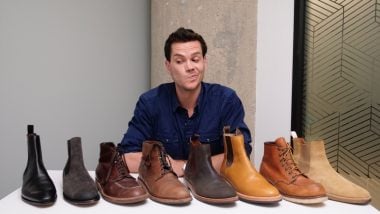


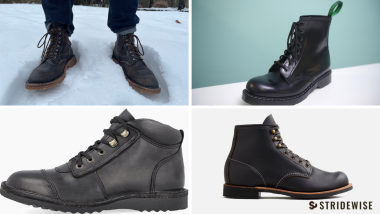


Hey Karl, just a little suggestion. There is a thing called socks or footwear. if you wear it before wearing your shoes. Your life will get a little more peaceful xD
Very good, very good
Really appreciate the article sir. You did your homework and I feel I have benefited from your knowledge / research.
Thank you!
Hey thanks a lot Chris! Glad you liked it
Excellent article! Very informative. Seriously thinking of buying a leather-soled pair of shoes!
So glad this very niche article appealed to someone, Vipul!
Great article, but you fail to mention the single-most important PRO of leather soles. The ability to keep your body grounded to the Earth’s surface, thereby allowing electrons (the best antioxidants known to man) to flow freely through your body and reduce or even eliminate inflammation.
I did not forget to say that
Dave is on the good sh*t. lol.
Forgot that leather “slippery shoes” are best for dancing. Rubber soles do not slide, and you want them to slide. So it depends on the purpose you buy them for.
Agree, and leather soles breathe well too! Great when you’re exerting
This was my thought as well. Leather soles are not outdated technology….he left out the purpose of dancing completely.
Gotta add that in, thanks for the reminder!
Love your content! Can you please share about methods/products that help make leather soles less slippery?
Beyond just wearing them and beating them up, any cobbler can attach some rubber to the bottom if it’s an issue. You sacrifice the breathability though!
Cowboy boots! Key to a safe boot is the ability of your boot to slip out of the stirrups if you fall off a horse!!!! My friend was wearing rubber type soled boot and when he fell off his horse his boot didn’t slide out. Yep his foot was ripped off. He lost his foot!!!
Ahhhh! Good to know there’s practicality to the laceless style
Do you have any advice for care of leather soles? Conditioners or waterproofing products to help extend the life of the soles? I bought a used pair of boots and I want to do everything I can to maximize my investment. TIA
Good question! I think regular Venetian Shoe Cream now and then should be fine.
I love the look of leather soles. However, they have one huge drawback for me: the hard heel. When I take a step in them, the impact of the heel onto the surface sends a jarring impact to my spine, which makes them, well, unwearable. They are bad for my spine and hips, because of that jarring impact from the heel.
Oh that’s interesting, a fair few leather soled boots have rubber taps on the heel to remedy that issue without affecting breathability too much. Also, insoles can help too, though that would also hit the breathability. not that most people notice the breathability anyway!